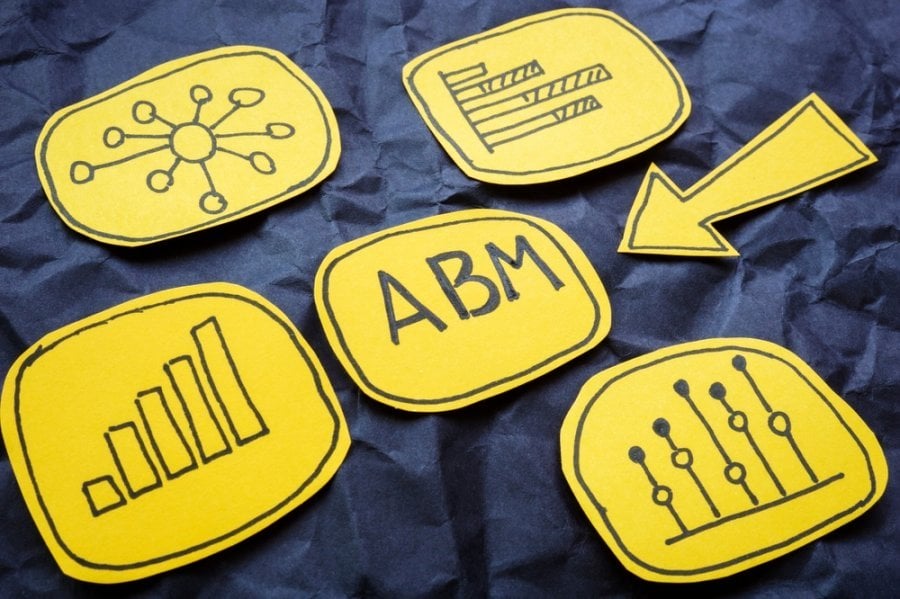
5 Top Ways To Use Digital Platforms for B2B Brand Visibility
In B2B branding, how well you use digital platforms greatly influences your position in the competitive market. But what are these tools, and how do you use them to increase your visibility?
This article explores five effective ways to leverage digital platforms, including:
 Social media is a powerful tool for B2B branding, but success goes beyond your number of followers. The quality of connections and interactions also matters.
Use social networking platforms to build meaningful relationships, initiate productive conversations, and nurture leads with these two tips:
Social media is a powerful tool for B2B branding, but success goes beyond your number of followers. The quality of connections and interactions also matters.
Use social networking platforms to build meaningful relationships, initiate productive conversations, and nurture leads with these two tips:
 Email marketing is a standout strategy for reaching your B2B audience directly. This approach sends the right content to the right people at the right time. It helps nurture leads and keeps your audience engaged.
Launch and manage a high-converting email marketing campaign with these tips:
Email marketing is a standout strategy for reaching your B2B audience directly. This approach sends the right content to the right people at the right time. It helps nurture leads and keeps your audience engaged.
Launch and manage a high-converting email marketing campaign with these tips:
- Search engine optimization (SEO)
- Social media engagement
- Content marketing
- Email marketing
- Paid advertising
Tired of investing in Search Engine Optimization without getting any results? See how Digital Authority Partners turns that around!
1. Optimize the Website for Search Engines
Making your website more visible to potential B2B clients starts with search engine optimization. A higher search ranking increases organic traffic and improves site and brand authority. Maximize SEO with these strategies:- Implement SEO best practices. Research keywords to find out what your target audience seeks. Then, update your site’s content, tags, and images to match these terms. Improve the website’s page speed and optimize it for mobile to align efforts with Google’s mobile-first indexing.
- Create high-quality content. Write articles, blog posts, and FAQs that solve problems for your audience. This improves your SEO and positions your brand as a go-to resource. Leverage artificial intelligence to streamline content marketing and enhance the copy’s relevance.
- Produce visual content. People love visuals, and so do search engines. A great tactic is to have your YouTube videos appear in featured snippets. Doing this dramatically increases your visibility in search results. Optimize your video titles and descriptions with keywords to boost your chances of landing in the search results.
2. Leverage Social Media Channels
 Social media is a powerful tool for B2B branding, but success goes beyond your number of followers. The quality of connections and interactions also matters.
Use social networking platforms to build meaningful relationships, initiate productive conversations, and nurture leads with these two tips:
Social media is a powerful tool for B2B branding, but success goes beyond your number of followers. The quality of connections and interactions also matters.
Use social networking platforms to build meaningful relationships, initiate productive conversations, and nurture leads with these two tips:
- Choose the right platforms. Social media sites vary in purpose, audience, features, and benefits. Prioritize those where your target B2B audience spends their time. For many, LinkedIn is a goldmine for professional networking, while others find better engagement on Twitter or industry-specific forums.
- Share valuable content. After choosing your platforms, focus on sharing content that adds value to your audience. Examples include industry insights, how-to guides, or updates on the latest trends. Quality content that informs and educates resonates more deeply and encourages meaningful engagement.
3. Use Content Marketing Strategies
Content marketing is critical for getting your B2B brand notice. Using visuals helps your message stick. People usually remember what they see more than what they read, so adding eye-catching images, infographics, and videos to your content is strategic. Further, apply the following tactics:- Write about what matters. Know the topics that interest your audience and dive deeply. Well-researched articles and blog posts that tackle industry challenges or new trends help set your brand apart as a knowledgeable leader.
- Boost your content with visuals. Kickstart your content marketing strategy by embedding visually appealing, relevant visuals. Graphics and videos simplify complicated ideas, making your content more engaging and easier to share.
- Engage with webinars and podcasts. Webinars and podcasts diversify content, helping you reach more audiences. They also exemplify your expertise and let you interact with the audience more deeply.
4. Run Email Marketing Campaigns
 Email marketing is a standout strategy for reaching your B2B audience directly. This approach sends the right content to the right people at the right time. It helps nurture leads and keeps your audience engaged.
Launch and manage a high-converting email marketing campaign with these tips:
Email marketing is a standout strategy for reaching your B2B audience directly. This approach sends the right content to the right people at the right time. It helps nurture leads and keeps your audience engaged.
Launch and manage a high-converting email marketing campaign with these tips:
- Break down the email list. Segment the email list into smaller groups based on job role, industry, or stage in the buying journey. Optimize lead magnets for segmentation. This lets you customize emails more effectively, ensuring subscribers receive only relevant messages.
- Customize emails. True personalization means creating emails that meet each recipient’s unique needs and interests. When your emails speak directly to your audience’s challenges and goals, it increases engagement and promotes stronger connections.
- Nurture leads with valuable content. Use emails to share helpful information with your audience. Whether it is the latest industry news, updates about your products, or useful tips, your goal is to inform and assist, guiding your leads closer to making a decision.
5. Invest in Paid Advertising
Paid advertising is a powerful way to quickly boost your B2B brand’s visibility. It helps you to precisely target audiences using features, such as custom and lookalike audiences. It also lets you test different messaging, landing pages, and calls to action to optimize conversion rates. Run a cost-effective paid ad strategy with these ideas:- Launch targeted pay-per-click (PPC) campaigns. PPC advertising puts your brand at the top of search results for your targeted keywords. Potential clients see you while looking for the solutions that you offer.
- Make the most of social media ads. Platforms, such as LinkedIn, allow you to tailor your ads based on specific demographics and interests. This precision targeting means your ads reach the B2B audience most likely to engage with your content and consider your services.
Summing Up
Bolstering your B2B brand’s online presence and attracting a wider audience are essential in the digital era. Focusing on SEO and content marketing makes your website more visible and delivers organic traffic. These strategies help your brand appear higher in search results and strengthen your online authority. If you want to improve your digital strategy and get noticed, Digital Authority Partners (DAP) has the B2B marketing expertise to help. We guide you through your branding efforts to help you stand out in the market. Contact us today for tailored advice on using digital platforms for success.Want To Meet Our Expert Team?
Book a meeting directly here



